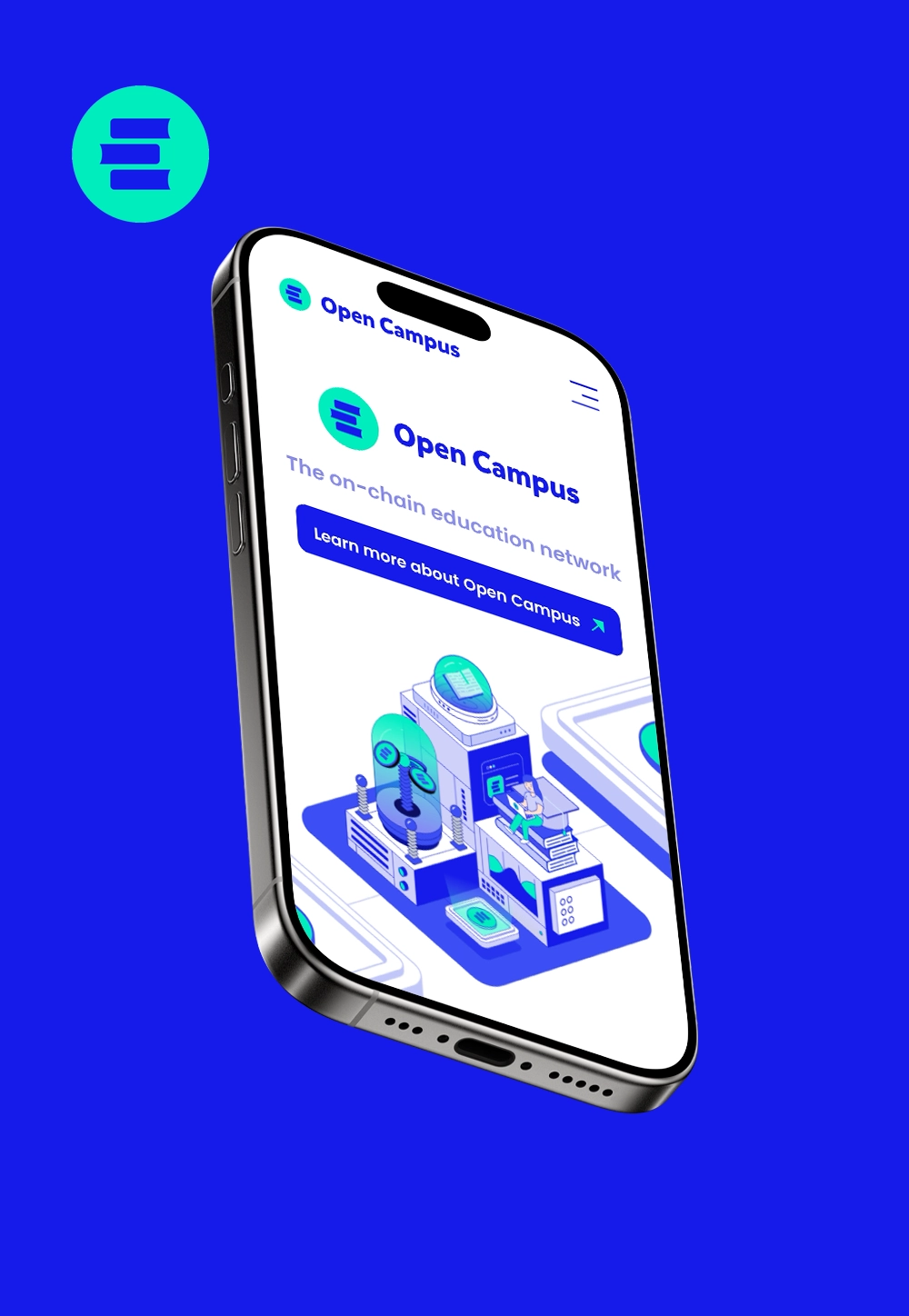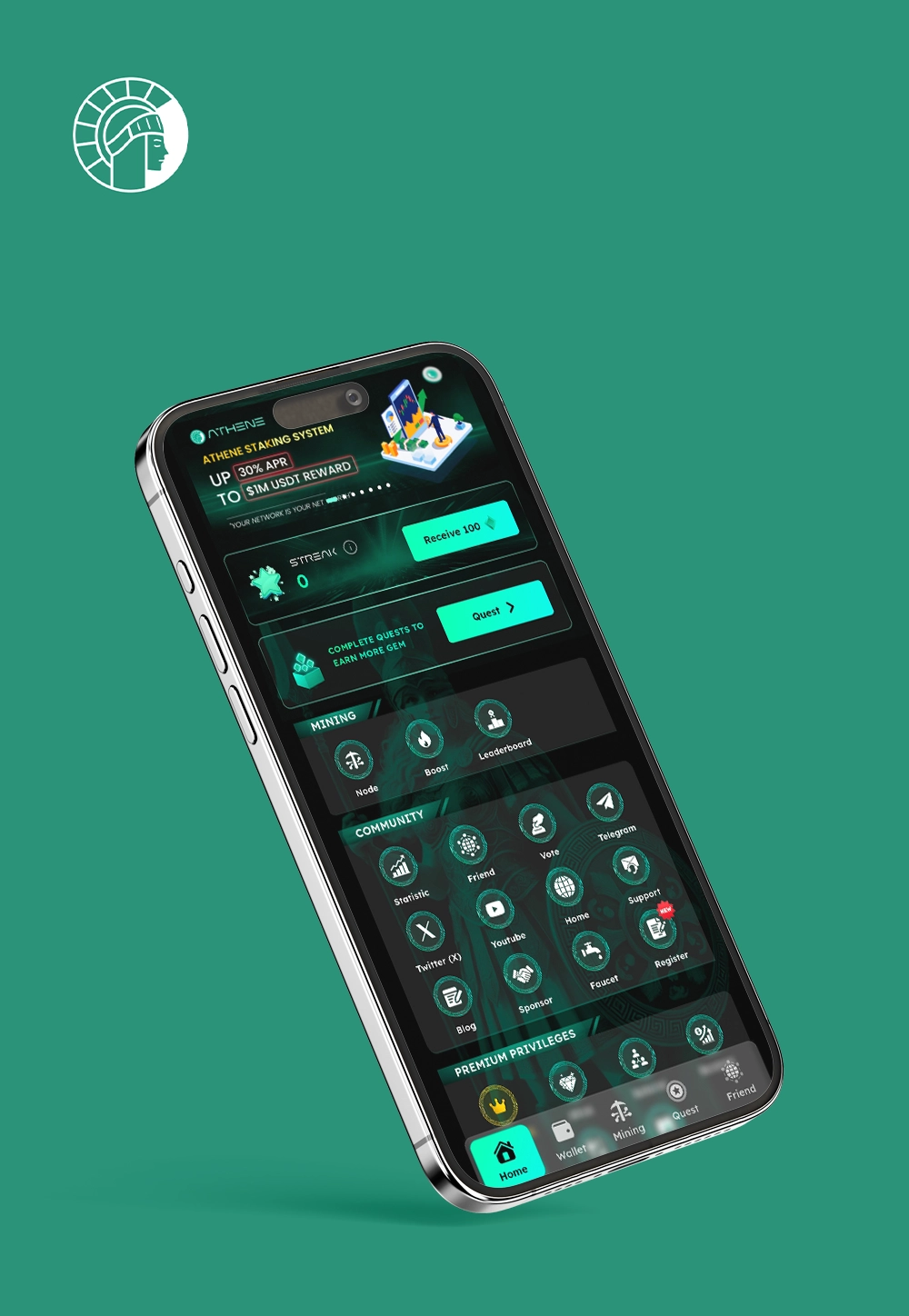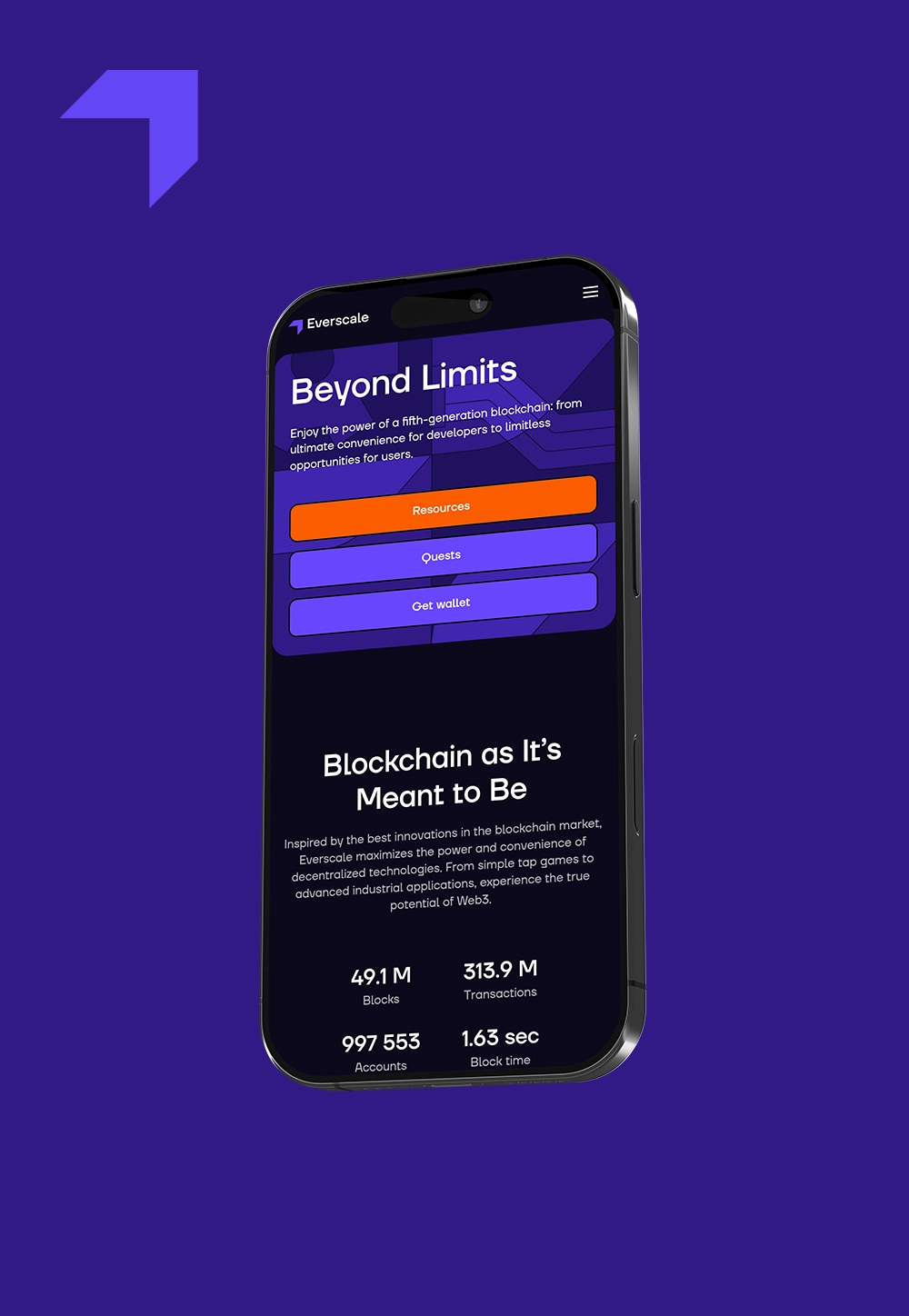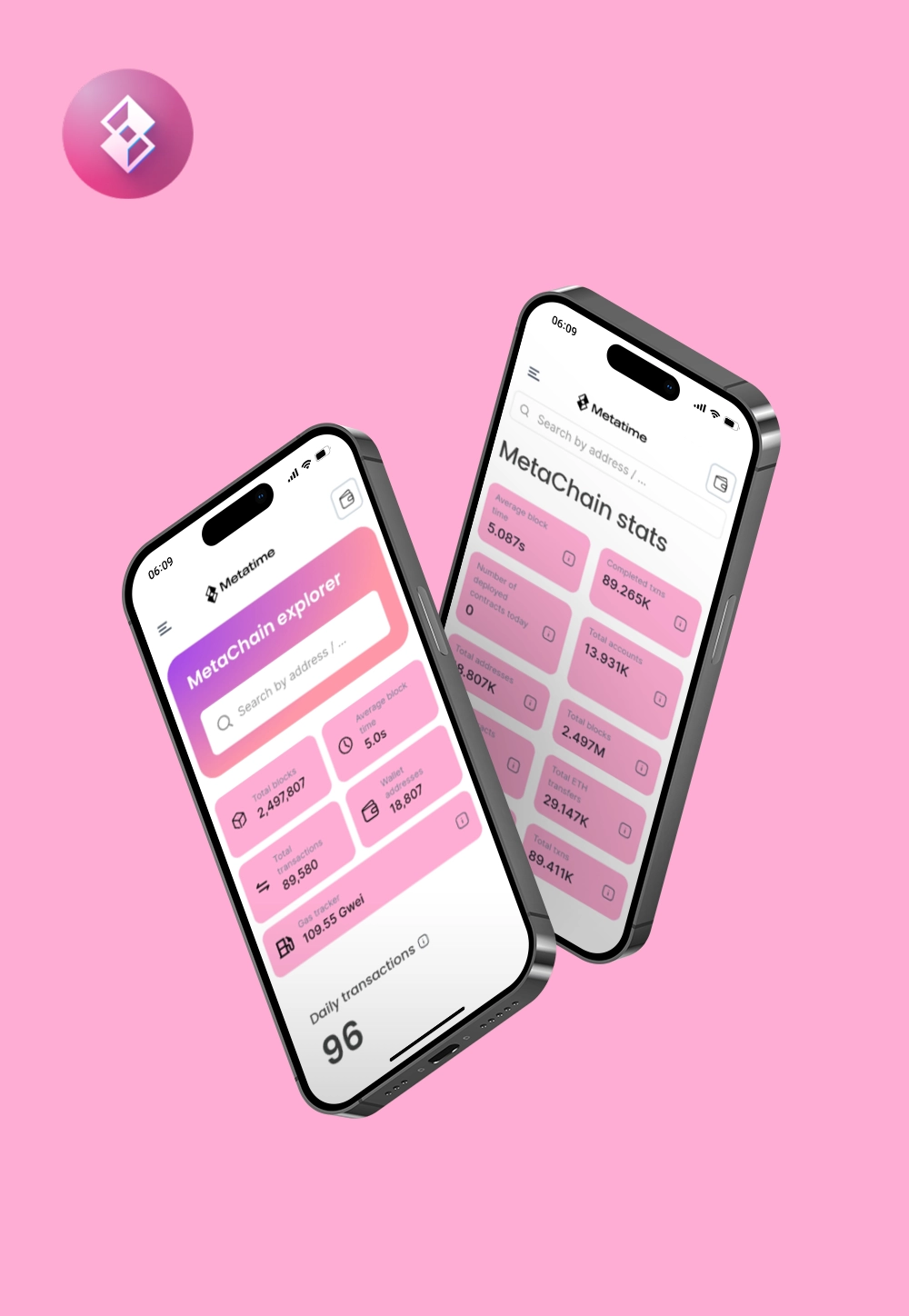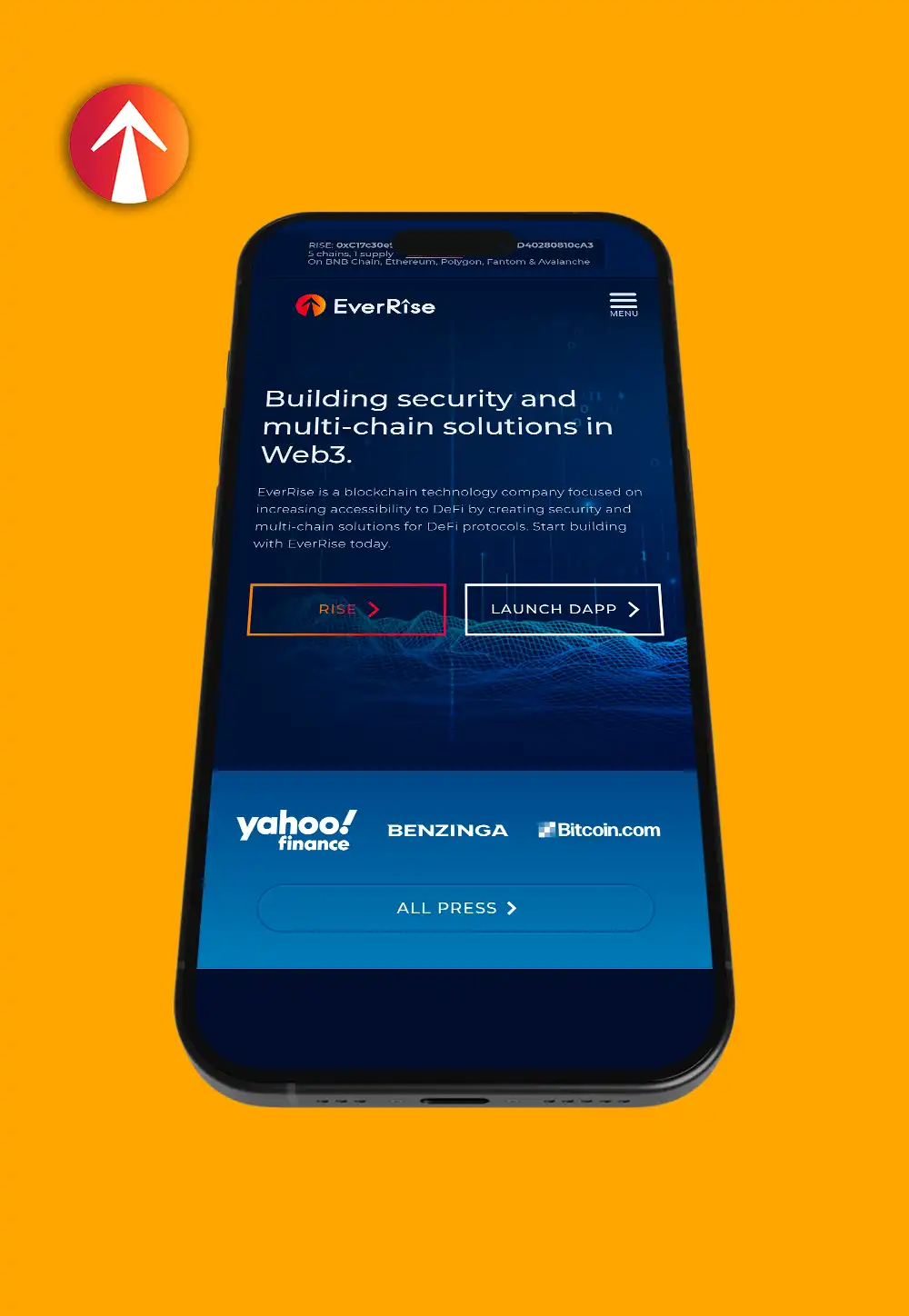
Open Campus
The Future of Blockchain in Education
Open Campus is an innovative initiative that introduces EDU Chain, the first Layer 2 blockchain designed specifically for the education sector. By harnessing blockchain technology, Open Campus aims to create a decentralized ecosystem that transforms the learning experience and introduces a Learn-to-Earn model. This unique approach enables learners to earn rewards for their educational achievements, making the entire journey more engaging and valuable.
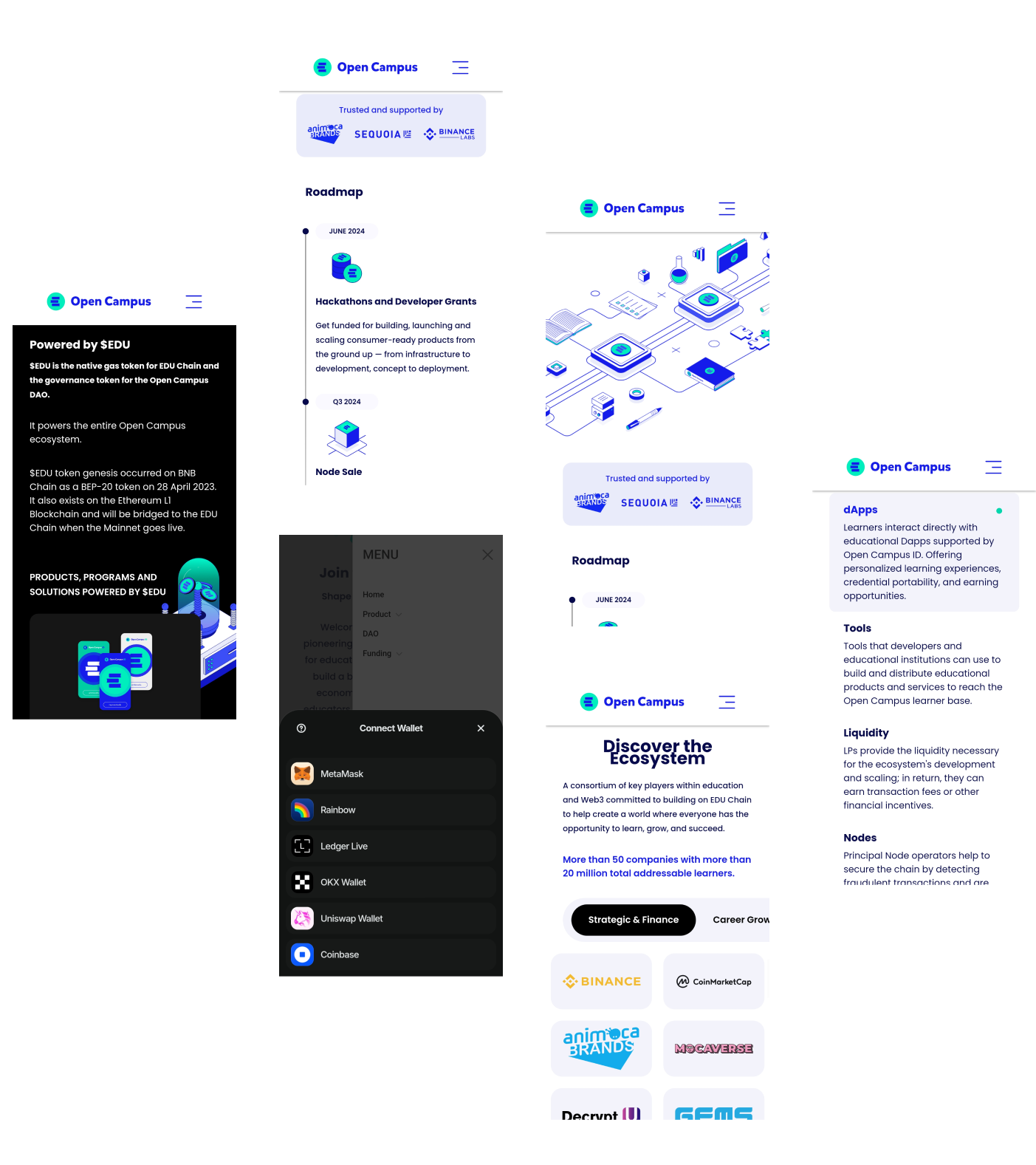
Client Requirements
Open Campus required a robust blockchain infrastructure to address the evolving needs of the education sector. The primary goal was to create a decentralized ecosystem where learners could earn rewards while engaging in educational activities. To achieve this, the platform needed to be user-friendly, catering to both tech-savvy individuals and those new to blockchain technology. Security was paramount, necessitating reliable mechanisms for validating transactions and ensuring the credibility of educational credentials. Additionally, Open Campus sought to facilitate liquidity for the ecosystem, allowing for seamless transactions and interactions among users.
Another critical requirement was scalability, as Open Campus aimed to support a large number of users and transactions without compromising performance. The initiative also emphasized forming partnerships with various educational institutions and Web3 organizations to create a consortium dedicated to improving educational access and quality. Furthermore, the platform needed tools for developers to create educational decentralized applications (DApps), thereby fostering a thriving ecosystem of innovative educational products and services. By addressing these client requirements, Open Campus aims to revolutionize education through blockchain technology and create a more equitable and accessible learning environment for all.
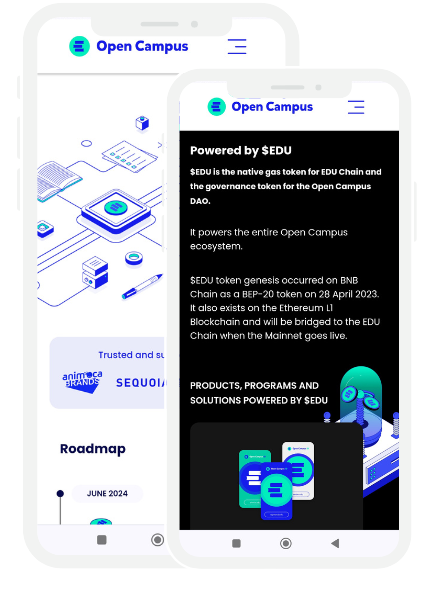
Features
Open Campus Blockchain
Learn-to-Earn Model
Earn rewards by engaging in courses, assessments, and milestones. This model motivates learners with financial incentives, making education interactive, rewarding, and aligned with personal skill development goals.
Decentralized Identity (OC ID)
OC ID gives learners control over secure digital identities and credentials. Blockchain ensures easy, tamper-proof sharing across platforms, enhancing trust and improving job and education opportunities.
Principal Nodes
Principal Nodes validate transactions and maintain network security. Operators earn $EDU rewards, promoting trust, performance, and active community participation in securing the Open Campus ecosystem.
Liquidity Pools
Users provide funds to liquidity pools, facilitating smooth transactions. In return, providers earn fees, promoting ecosystem growth, stability, and improved user experiences through reliable resource availability.
Educational DApps
Open Campus offers blockchain-based DApps for interactive courses and collaboration. These secure, transparent apps personalize learning, enable feedback, and foster innovation in educational content and delivery.
Tokenized Course Content
Educators mint course materials as $EDU tokens, ensuring fair compensation. Tokenization promotes revenue sharing, collaboration, and easier access to quality courses, benefiting both creators and learners.
Developer Grants
Open Campus funds developers building educational tools and DApps. Grants support innovation in learning, credential verification, and engagement, fostering a vibrant community that enhances educational access globally.
Accelerator Program
A six-week program supports education startups with funding, mentorship, and networking. It helps scale innovative ideas, strengthening the ecosystem and improving access and quality in education worldwide.
More Screens
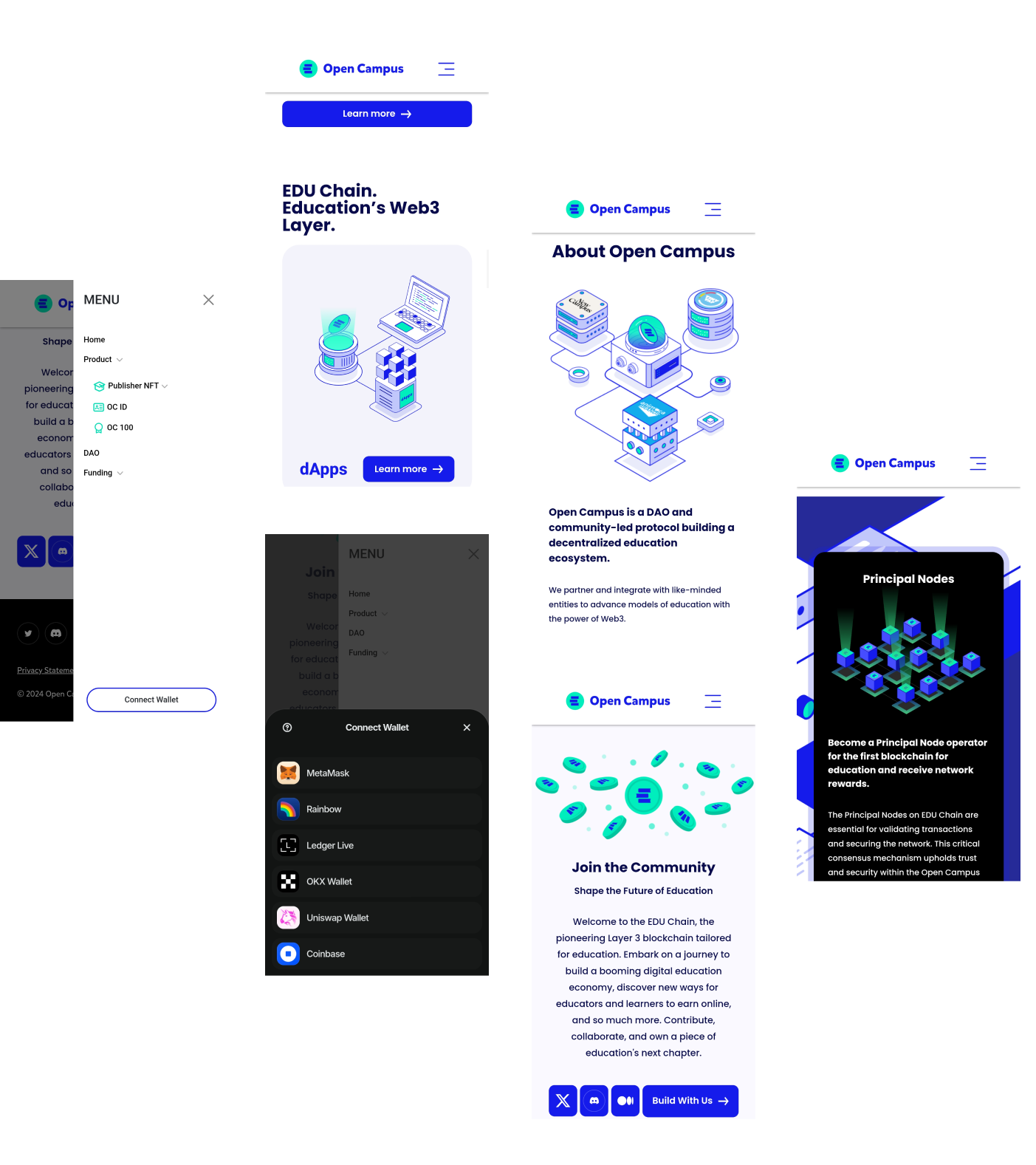
Consensus Mechanism
Proof of Stake (PoS)
PoS lets users stake $EDU tokens to validate transactions. More tokens staked increase validation chances, boosting security while reducing energy use compared to Proof of Work, making it eco-friendly.
Practical Byzantine Fault Tolerance (PBFT)
PBFT achieves consensus despite faulty nodes by requiring supermajority agreement through message exchanges. It tolerates up to one-third faulty nodes, ensuring secure, reliable operation for critical blockchain applications.
Federated Consensus
Federated consensus relies on a selected group of trusted nodes to validate transactions, improving speed and security. It balances decentralization and trust, ideal for applications needing fast, reliable transaction confirmations.
Hybrid Consensus Model
Combining multiple consensus methods, the hybrid model boosts security, scalability, and efficiency. It adapts dynamically, using PoS and DPoS to balance transaction throughput and robust protection for blockchain education use.
Delegated Proof of Stake (DPoS)
DPoS lets token holders delegate voting to trusted validators who confirm transactions efficiently. Elected delegates earn rewards, enhancing network scalability, security, and giving stakeholders governance power.
Authority-Based Consensus
Trusted authority nodes validate transactions exclusively, speeding block creation and improving efficiency. Suitable for private networks, it depends on reputable nodes following governance and security protocols to maintain trust.
Proof of Authority (PoA)
PoA uses pre-approved validators chosen by reputation to confirm transactions quickly with low resource use. Best for permissioned networks, it depends on validator integrity to maintain security and accountability.
Staking Rewards Mechanism
Users staking $EDU tokens earn rewards proportional to stake and duration, encouraging long-term investment. This strengthens network security and fosters community participation within the Open Campus ecosystem.
Colors & Typography
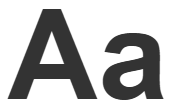
For Customers
Open Sans, sans-serif
Aa Bb Cc Dd Ee Ff Gg Hh Ii Jj Kk Ll Mm Nn Oo Pp Qq Rr Ss Tt Uu Vv Ww Xx Yy Zz
Project Approach & Results
Project Approach The approach to developing Open Campus involved a comprehensive strategy that prioritized collaboration, innovation, and user engagement. The project began with extensive market research to identify the needs of learners, educators, and institutions in the education sector. This research informed the design of the EDU Chain and its associated features, ensuring that they addressed the unique challenges faced by stakeholders. The team adopted an agile development methodology, allowing for iterative improvements based on user feedback and technological advancements. This flexible approach facilitated the creation of decentralized applications (DApps) tailored to various educational scenarios, enhancing user interaction and overall experience.
Additionally, Open Campus focused on building strategic partnerships with educational institutions, technology providers, and Web3 organizations.
Project Results The implementation of Open Campus has led to significant advancements in the education sector, with the EDU Chain attracting a diverse user base of learners and educators. Since its launch, the platform has successfully facilitated numerous educational transactions, demonstrating the effectiveness of the Learn-to-Earn model. Users have reported increased engagement and motivation due to the financial rewards associated with their learning progress. The decentralized identity feature has also garnered positive feedback, as learners can easily manage and showcase their credentials across multiple platforms, enhancing their employability and educational opportunities.
Moreover, the collaboration with educational institutions and industry partners has resulted in a rich ecosystem of DApps that cater to various learning styles and preferences. The accelerator program has successfully supported numerous startups, fostering innovation and growth within the educational landscape.
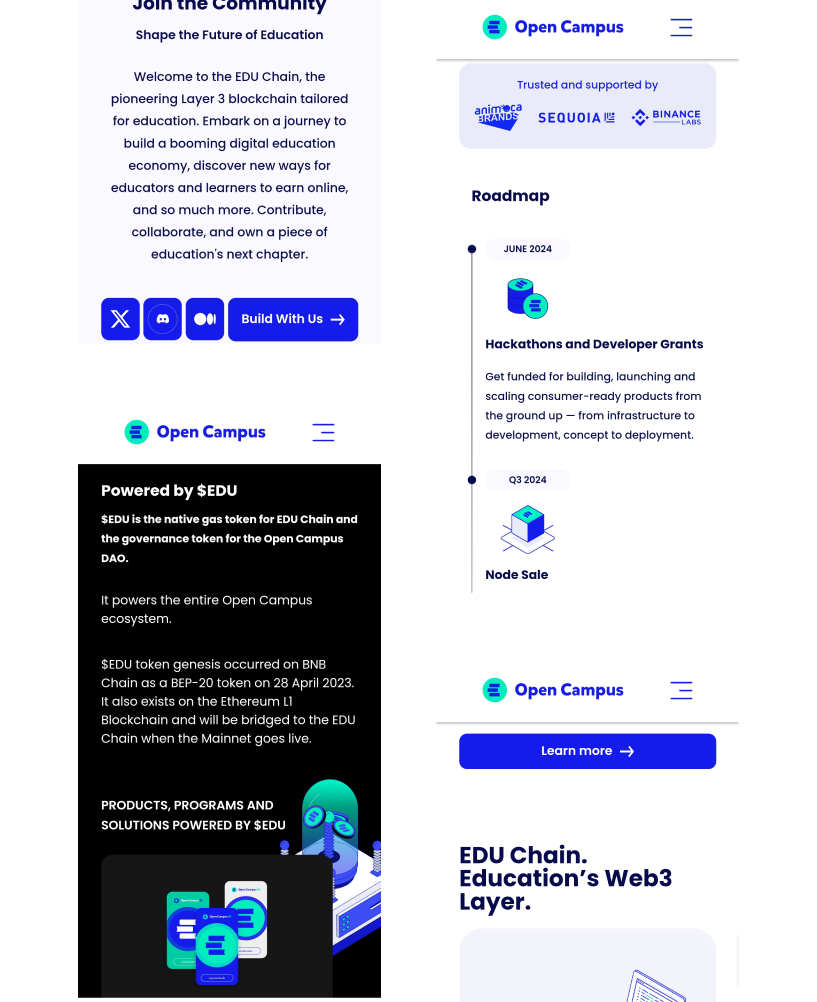
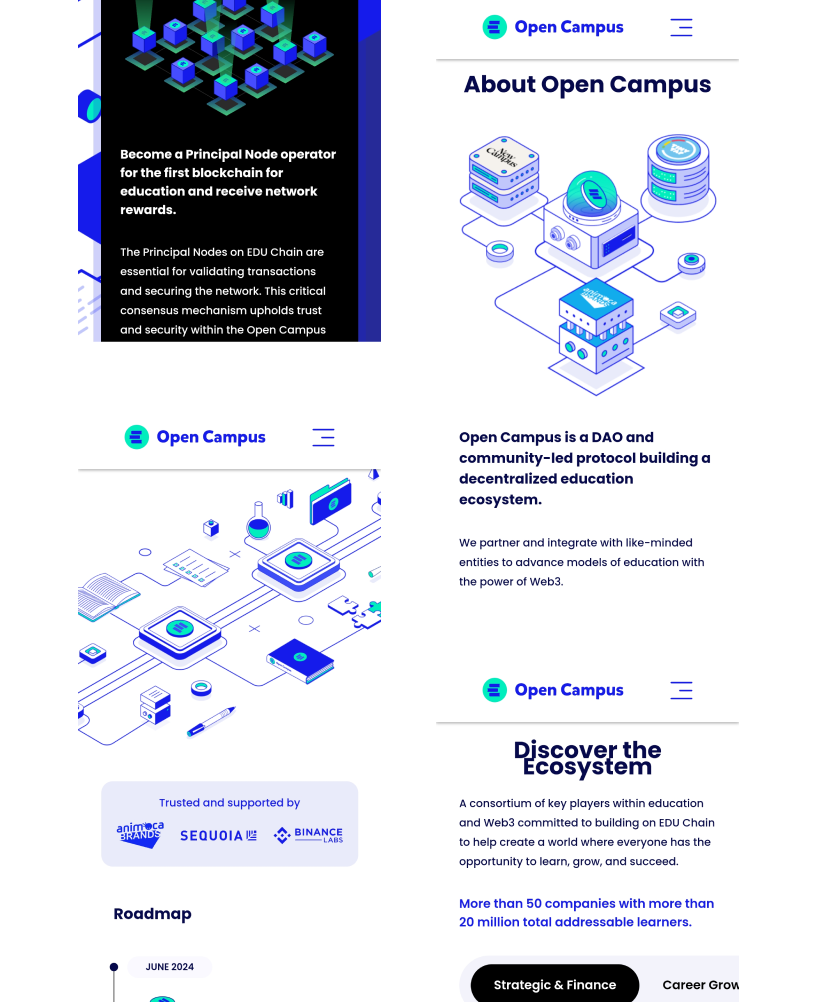
Challenges
Adoption and User Education
One of the primary challenges faced by Open Campus is driving user adoption in a market that is still largely unfamiliar with blockchain technology. Many potential users, including educators and learners, may have limited knowledge of how blockchain works and how it can benefit their educational experiences. To address this, Open Campus needs to invest in comprehensive educational resources, workshops, and community engagement initiatives. These efforts must focus on demonstrating the value of the Learn-to-Earn model and how decentralized identity and credential portability can enhance their learning journey.
Regulatory Compliance
Navigating the complex landscape of regulatory compliance poses a significant challenge for Open Campus. The education sector is heavily regulated, and blockchain technology introduces additional layers of complexity. Open Campus must ensure that its operations align with existing educational laws and regulations, particularly regarding data privacy and security. This involves working closely with legal experts to interpret regulations across different jurisdictions and adapt the platform accordingly.
Technical Scalability
As Open Campus aims to support a growing number of users and transactions, ensuring technical scalability becomes increasingly challenging. The underlying blockchain infrastructure must handle increased loads without sacrificing performance or security. This includes managing transaction speeds, network congestion, and the overall user experience. To address this challenge, Open Campus may need to explore various scaling solutions, maintaining a balance between decentralization and efficiency will be critical, as overly centralized solutions may compromise the platform’s core principles.
Technology Stacks
Open Campus offers decentralized education, Learn-to-Earn incentives, credential portability, and developer tools for DApps.










Blockchain Solutions Built to Scale

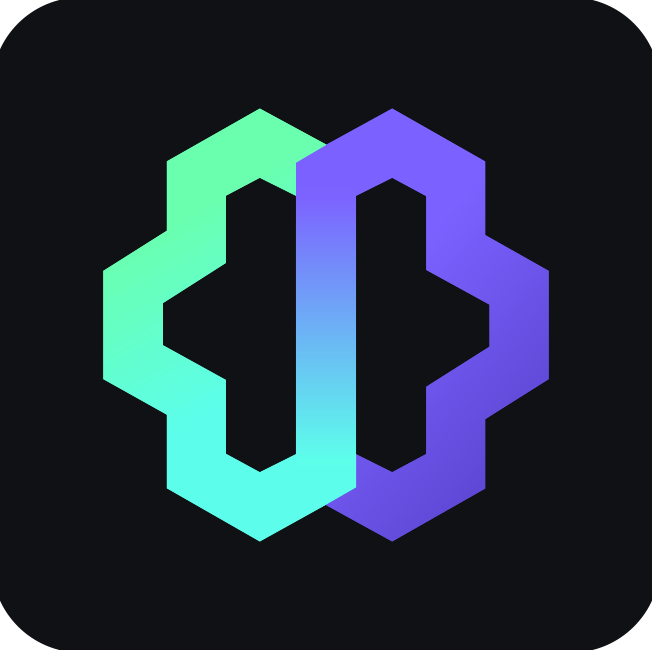
TARALITY
TARALITY
Tarality is a multifaceted Cryptocurrency Platform that offers a range of financial services including Buy Crypto, Borrow, Buy Now Pay Later (BNPL), Fixed Deposit, Referral, and Withdrawals. Additionally, it provides unique trading options such as INR Trade, Request Token, Unique Trade, and Safe Trade.
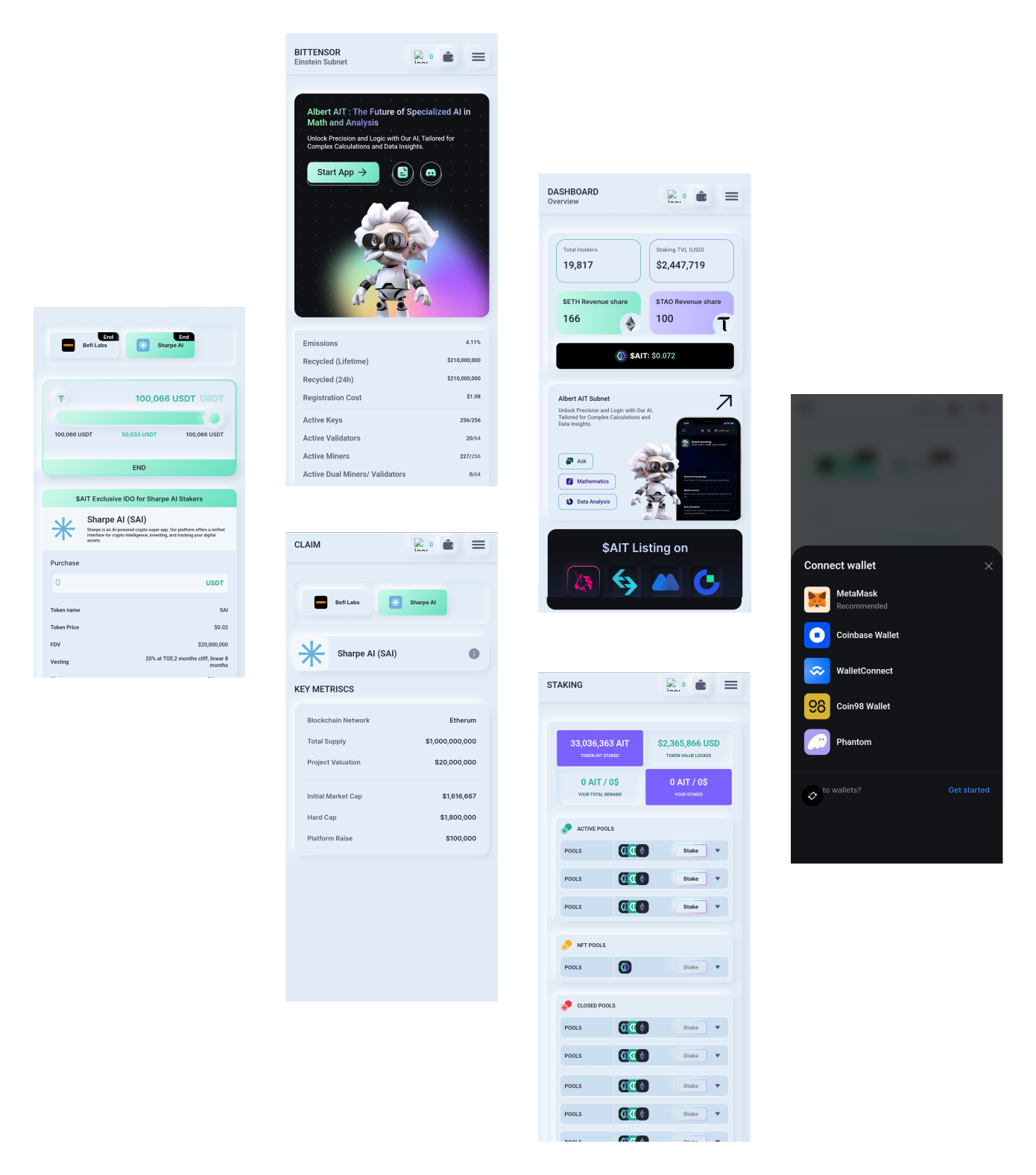
Client Requirements
The client wanted a comprehensive platform that merges traditional financial services with advanced crypto functionalities. They needed an easy-to-use interface for buying and Cryptocurrency Trading, borrowing money against crypto assets, and using a Buy Now Pay Later (BNPL) feature. The platform also needed a fixed deposit option, allowing users to lock their crypto assets and earn interest. A referral program was essential to encourage user growth, and a secure, straightforward process for withdrawing funds was also required. These features had to be user-friendly and efficient, catering to both beginners and experienced crypto users, ensuring everyone could navigate and benefit from the platform seamlessly.
Moreover, the client requested special trading features and robust security measures to ensure a safe and versatile platform. They needed INR Trade for trading cryptocurrencies against the Indian Rupee, and a Request Token feature for users to propose new tokens for listing. Unique Trade was required to offer specialized trading strategies, and the Safe Trade feature was essential for secure transactions with advanced protection. The client also wanted a governance system, allowing users to participate in decision-making processes. These features aimed to create a comprehensive, secure, and engaging platform, providing users with a wide range of tools for managing and trading their cryptocurrencies effectively.
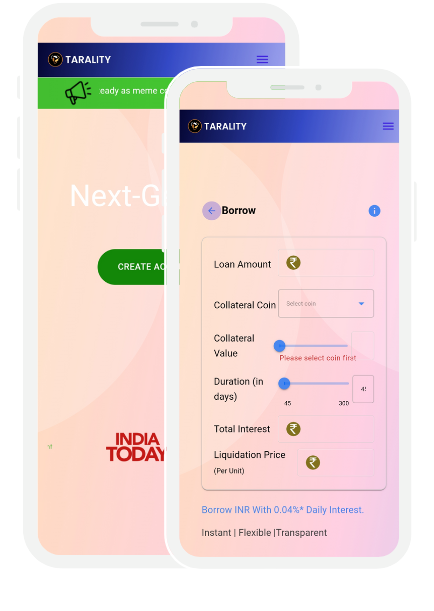
Features
TARALITY
Buy Crypto
Purchase various cryptocurrencies easily using bank transfers, cards, or wallets. Enjoy a seamless buying process with competitive rates, quick transactions, and minimal fees on the Tarality platform.
Fixed Deposit
Earn interest by locking your crypto in fixed-term deposits. Choose from various durations with attractive rates, offering a secure and rewarding way to grow your digital assets.
Borrow
Take crypto-backed loans without selling your assets. Tarality offers flexible terms, fair interest rates, and fast approval to help you unlock liquidity while keeping your investments intact.
BNPL (Buy Now Pay Later)
Shop now and pay later with crypto. Tarality’s BNPL supports installment plans, enabling flexible spending across vendors while managing payments easily over scheduled durations with no hassle.
Referral Program
Invite friends and earn rewards. Tarality’s referral program gives bonuses and discounts for each successful signup, promoting community growth and incentivizing users to expand the platform together.
Withdrawals
Withdraw your funds anytime with ease. Tarality enables fast transfers to bank accounts or digital wallets, ensuring asset liquidity with a secure, smooth, and low-fee withdrawal process.
INR Trade
Trade cryptocurrencies directly with INR. Tarality offers high liquidity, real-time prices, and popular trading pairs, making it convenient for Indian users to enter and manage crypto investments.
Request Token
Request new tokens to be listed. Tarality’s community-driven feature allows users to suggest and vote on tokens, ensuring the platform evolves with market trends and user interests.
Unique Trade
Access advanced and personalized trading. Tarality’s Unique Trade feature offers smart tools, tailored strategies, and algorithmic options to enhance user profitability and optimize trading outcomes.
Safe Trade
Trade with confidence using Tarality’s secure systems. Advanced security like multi-sig wallets, fraud detection, and real-time monitoring ensures your assets are always protected during transactions.
More Screens
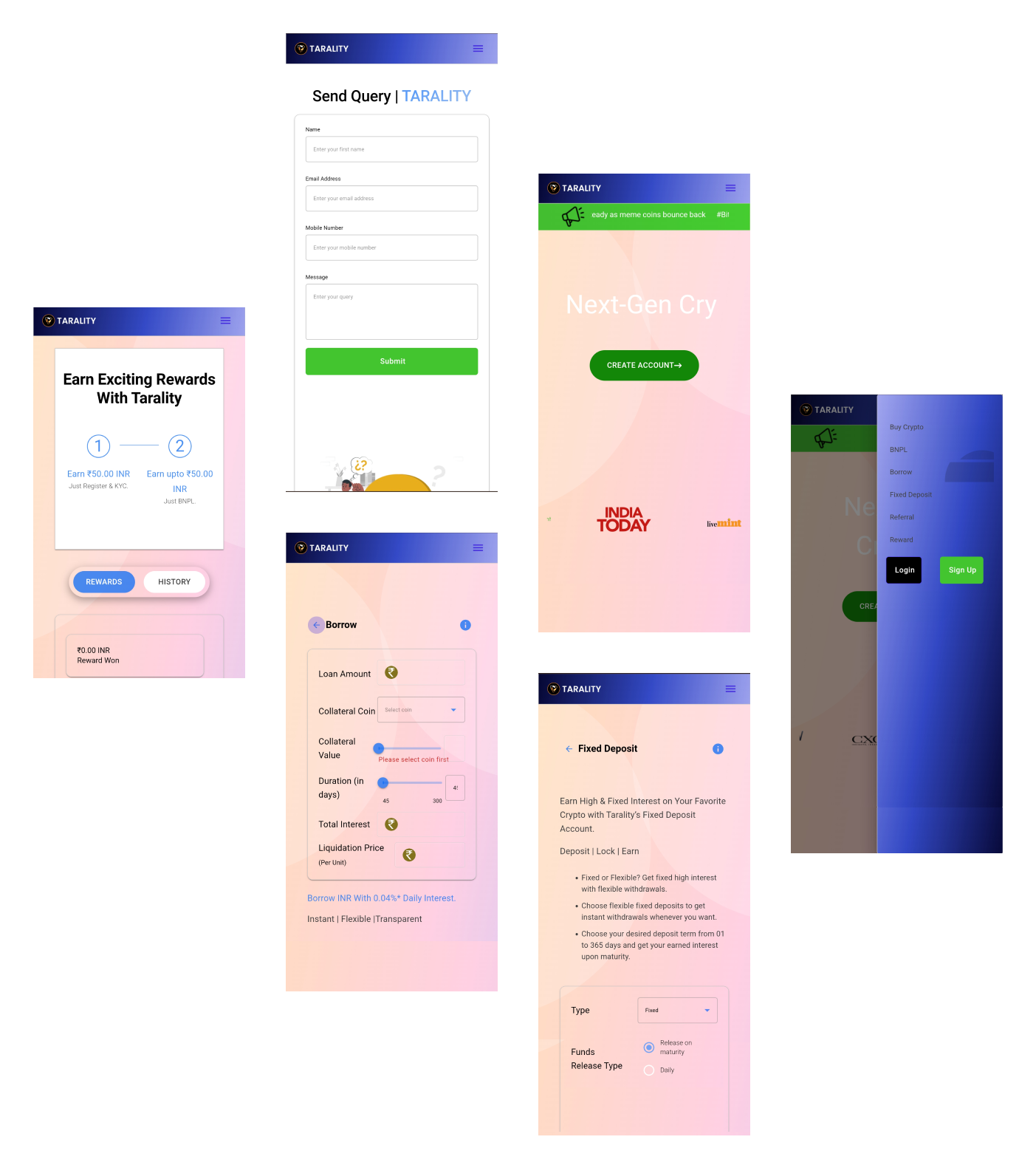
Consensus Mechanism
Proof of Stake (PoS)
Validators are chosen based on the number of tokens they hold and are willing to “stake” as collateral, promoting energy efficiency and reducing the need for extensive computational power.
Proof of Authority (PoA)
A set of approved validators (authorities) are responsible for verifying transactions and blocks, ensuring high throughput and reduced latency while maintaining a trusted and secure network.
Hybrid PoW/PoS
Combines Proof of Work (PoW) and Proof of Stake (PoS) to benefit from the security of PoW and the energy efficiency of PoS, ensuring a balanced and robust consensus mechanism.
Delegated Proof of Stake (DPoS)
Token holders vote to elect a small number of delegates who validate transactions and create new blocks, enhancing transaction speed and democratizing the validation process through community participation.
Byzantine Fault Tolerance (BFT)
Validators reach consensus through a voting process that ensures the system can continue functioning correctly even if some nodes act maliciously or fail, enhancing network resilience and security.
Layered Consensus
Involves multiple layers of consensus mechanisms working together, such as combining PoS for block production with PoA for transaction validation, optimizing both security and performance for complex platform requirements.
Open Sans, sans-serif
Aa Bb Cc Dd Ee Ff Gg Hh Ii Jj Kk Ll Mm Nn Oo Pp Qq Rr Ss Tt Uu Vv Ww Xx Yy Zz
Project Approach & Results
Project Approach The project followed a structured and systematic approach to ensure the successful implementation of the AIT Protocol. The initial phase involved a comprehensive analysis of client requirements and market research to understand the competitive landscape. This was followed by the design and architecture phase, where a scalable and secure architecture was developed to support the desired features. The development phase employed an iterative process with regular feedback loops to incorporate client and user feedback, ensuring that the platform met all requirements and expectations.
Project Results The AIT Protocol achieved significant milestones post-deployment. The platform witnessed rapid adoption within the blockchain and AI communities, reflecting its robustness and appeal. Performance metrics indicated high throughput and low latency in transaction processing, meeting the scalability requirements effectively. The security measures proved effective, with no major security breaches reported, underscoring the reliability of the implemented protocols. User feedback was overwhelmingly positive, with high satisfaction regarding the intuitive interface and seamless functionality.
Future Prospects The result of these endeavors was the creation and rollout of the mining app, which gained significant attention within the AI community. Its intuitive interface, comprehensive functionalities, and backing from a vibrant community propelled its rapid adoption. Users lauded its simplicity, dependability, and groundbreaking approach to decentralized AI development and cooperation. Consequently, the mining app saw exponential expansion, drawing in a wide-ranging and enthusiastic user community eager to participate in driving forward AI technology.

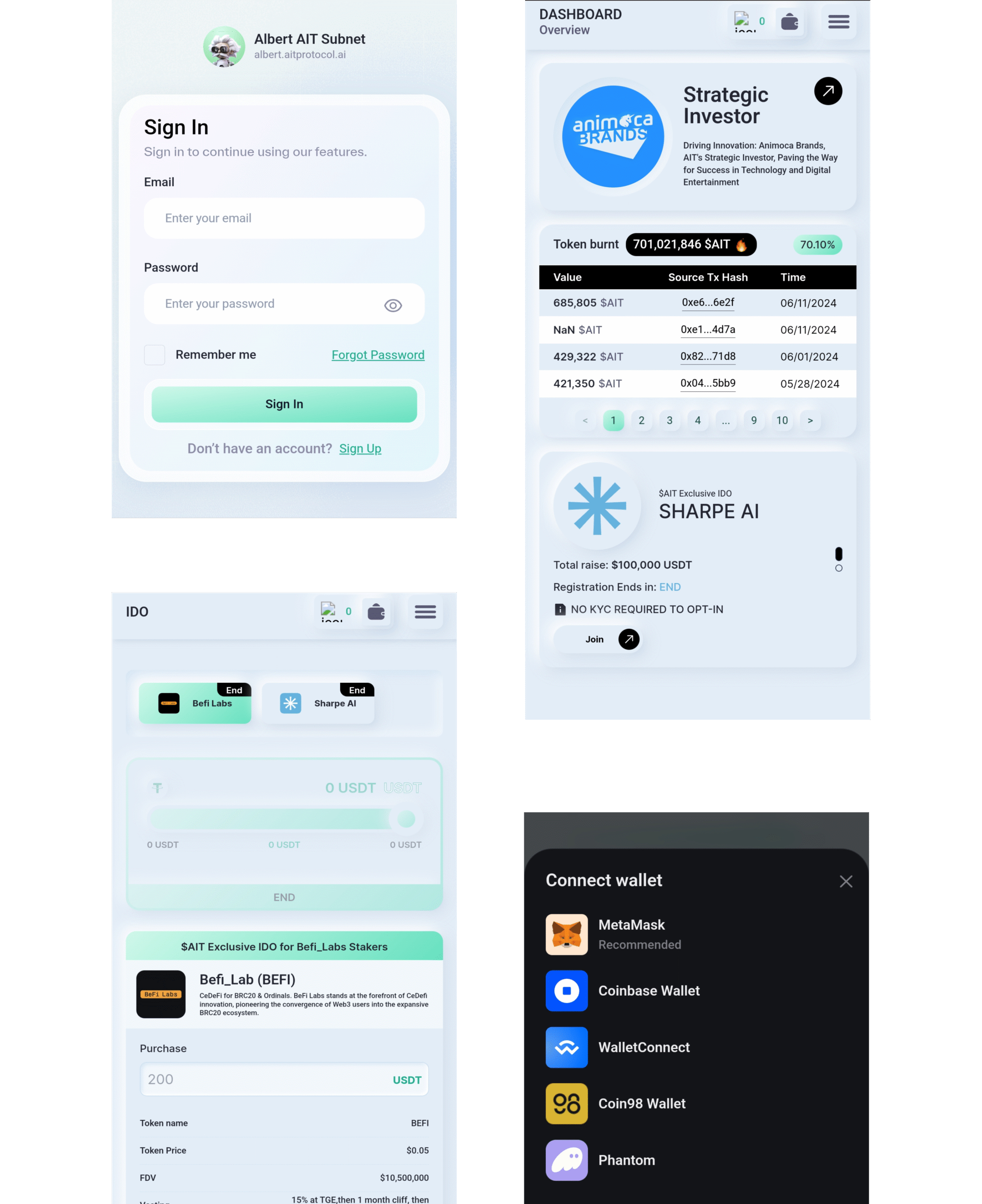
Challenges
Scalability Issues
One of the primary challenges faced during the development of AIT Protocol was ensuring scalability. The platform needed to handle a large number of transactions per second without compromising on performance. This required innovative solutions and optimizations to achieve the desired throughput and efficiency. By leveraging advanced blockchain technologies and architectural optimizations, the team was able to address these scalability challenges effectively.
Security Concerns
Ensuring the security of the AIT Protocol was a significant challenge. Protecting against potential vulnerabilities and ensuring the integrity of data and transactions required implementing advanced cryptographic techniques and robust security measures. Regular security audits and testing were conducted to identify and mitigate potential threats, ensuring a secure and reliable platform for users.
Integration Complexities
Integrating the AIT Protocol with other blockchain networks and traditional systems presented several complexities. Ensuring seamless interoperability and smooth data flow required addressing compatibility issues and developing robust APIs. The team employed a modular approach to integration, allowing the platform to interact with various systems and networks efficiently.
Technology Stacks
The AIT Protocol utilized a diverse set of technologies to meet its objectives.










Blockchain Solutions Built to Scale


 Blockchain
Blockchain  Apps & Game
Apps & Game  AI & ML
AI & ML  AR & VR
AR & VR  IOT Services
IOT Services  E-commerce
E-commerce  Frontend Developer
Frontend Developer  Backend Developers
Backend Developers  Game Developers
Game Developers  Ecommerce Developer
Ecommerce Developer  Dedicated Developers
Dedicated Developers 

